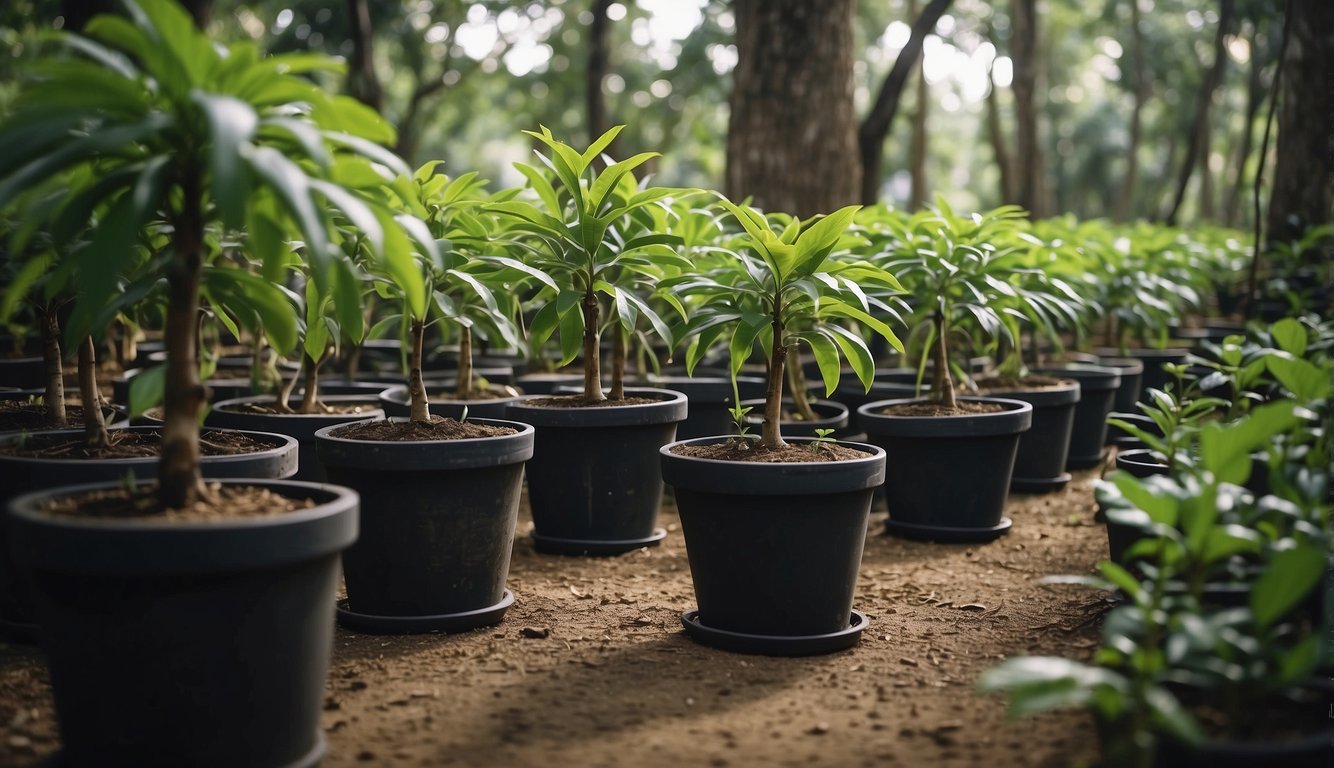TheHerbProf.com is a treasure trove of knowledge for those interested in natural healing and herbal remedies. The website is run by Paul Johnston MD. A naturopathic who has not only received extensive education in the field but also has personal experience in self-healing.
Rubber trees (Ficus elastica) are popular houseplants that are known for their large, glossy leaves and easy care. However, one common question that arises among plant owners is whether rubber trees like to be root bound. As someone who has cared for rubber trees for years, I can confidently say that while rubber trees can tolerate being root bound for short periods of time, it is not ideal for their growth and health.
When a rubber tree becomes root bound, it means that the roots have outgrown the current pot and are tightly packed together, often circling around the inside of the pot. This can lead to a number of issues, including stunted growth, yellowing leaves, and a weakened immune system that makes the plant more susceptible to pests and diseases. As such, it is important to repot rubber trees into larger pots as they grow to ensure that they have enough room for their roots to spread out and access the nutrients they need to thrive.
Understanding Rubber Trees – Do Rubber Trees Like to Be Root Bound?
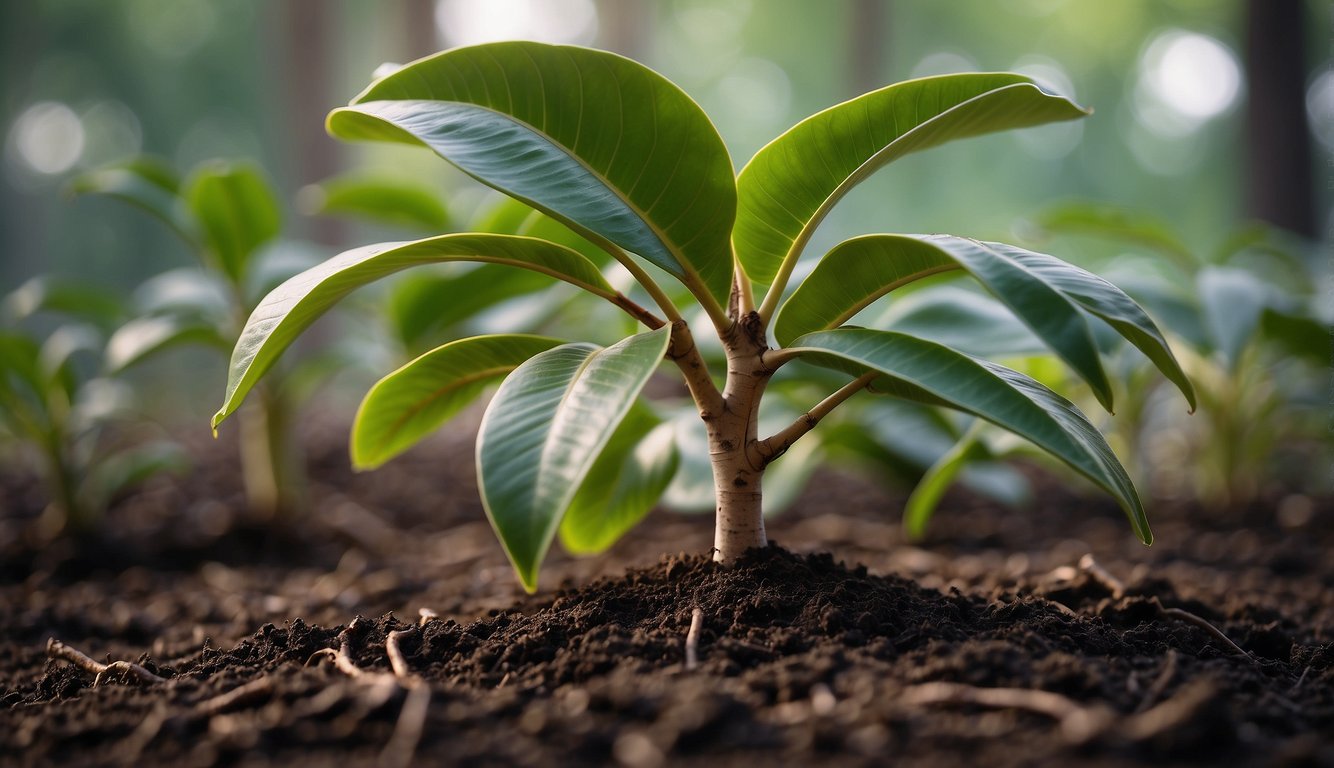
As a plant parent, it is important to understand the needs of your plants to help them thrive. Rubber trees, also known as Ficus elastica, are popular houseplants due to their attractive foliage and easy-to-care-for nature. In this section, I will provide an overview of rubber trees to help you better understand their growth habits and needs.
Common Name and Botanical Name – Do Rubber Trees Like to Be Root Bound?
Rubber trees are also commonly known as rubber plants. Their botanical name is Ficus elastica. They belong to the Moraceae family, which also includes figs and mulberries.
Growth Habits
Rubber trees are native to Southeast Asia and can grow up to 100 feet tall in their natural habitat. As houseplants, they typically grow up to 10 feet tall. They have large, glossy leaves that can range in color from dark green to variegated. Rubber trees are moderate to fast growers and can add several inches of new growth each year.
Root System
Rubber trees have a strong and extensive root system that can become root bound if left in the same pot for too long. Being root bound means that the roots have grown to fill the entire pot and have no more room to grow. This can cause the plant to become stressed and can lead to stunted growth, yellowing leaves, and even death.
Potting Needs – Do Rubber Trees Like to Be Root Bound?
To prevent your rubber tree from becoming root bound, it is important to repot it every 1-2 years. When repotting, choose a pot that is one size larger than the current pot to give the roots room to grow. Use a well-draining potting mix, and make sure to water the plant thoroughly after repotting.
In summary, rubber trees are versatile and easy-to-care-for houseplants that can add a touch of tropical elegance to any space. Understanding their growth habits and potting needs can help you keep your rubber tree healthy and thriving.
Optimal Growing Conditions
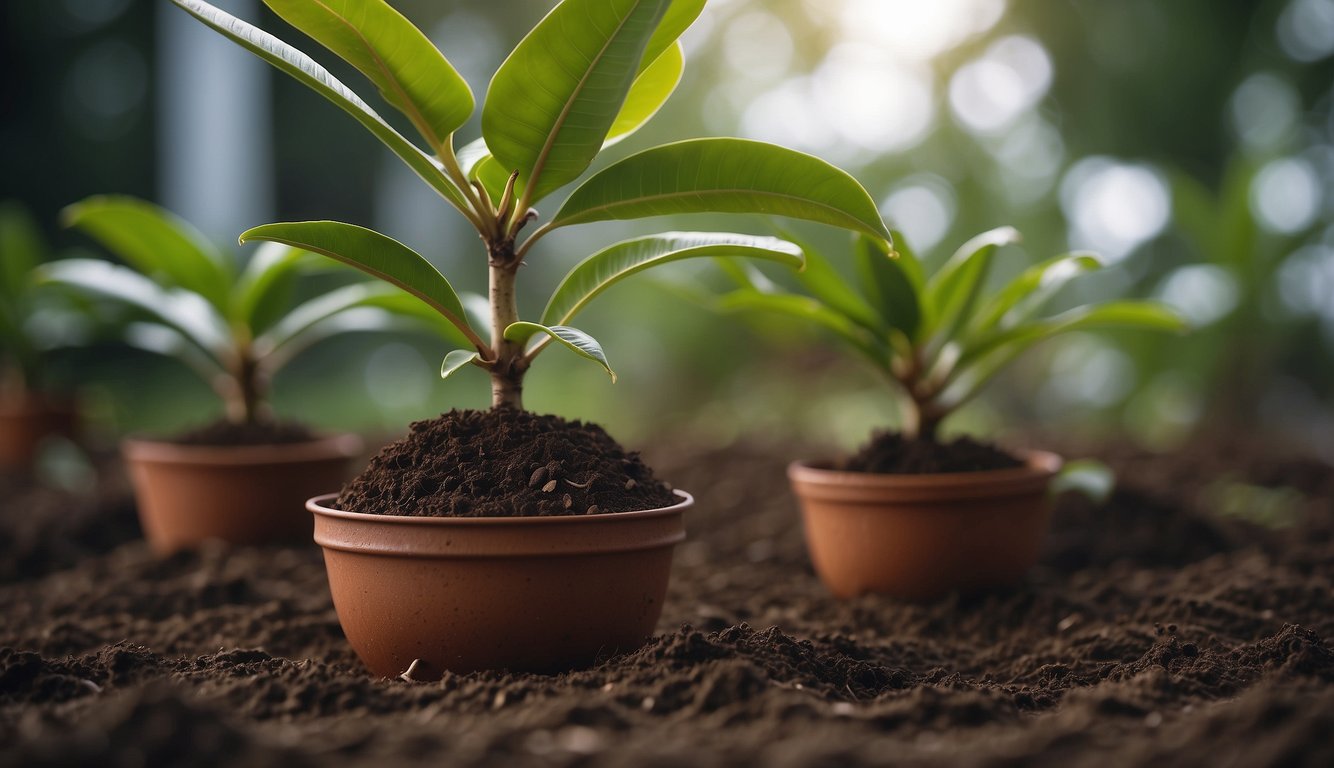
Rubber trees are relatively easy to care for and can thrive under the right conditions. Here are some guidelines for providing optimal growing conditions for your rubber tree.
Soil Requirements
Rubber trees prefer a well-draining potting soil that is slightly acidic with a pH range of 6.0 to 7.0. A good potting mix can be created by combining compost, perlite, sand, and peat moss or coconut coir in equal parts. It is important to ensure that the soil is well-draining to prevent waterlogging, which can lead to root rot.
Light and Temperature – Do Rubber Trees Like to Be Root Bound?
Rubber trees prefer bright, indirect light and temperatures between 60 and 80°F. Direct sunlight can scorch the leaves, so it is important to place the plant in a location with bright, filtered light. In addition, rubber trees do not tolerate cold temperatures or drafts, so avoid placing them near windows or doors that may let in cold air.
Watering and Humidity
Rubber trees prefer moderate watering and humidity. Water the plant when the top inch of soil is dry to the touch, and ensure that the pot has adequate drainage holes to prevent waterlogging. Rubber trees also benefit from occasional misting to increase humidity levels.
Nutrition and Fertilization
Rubber trees benefit from regular fertilization during the growing season. Use a balanced fertilizer with equal parts nitrogen, phosphorus, and potassium. Fertilize every two to three weeks during the growing season, and reduce fertilization during the winter months.
Repotting Essentials
Rubber trees should be repotted every two to three years, or when the plant becomes root-bound. Choose a pot that is one size larger than the current pot, and ensure that it has adequate drainage holes. When repotting, gently loosen the root ball and remove any dead or damaged roots before placing the plant in the new pot.
Pruning and Maintenance – Do Rubber Trees Like to Be Root Bound?
Rubber trees require minimal pruning and maintenance. Remove any dust or debris from the leaves with a damp cloth, and trim any leggy or drooping branches to encourage bushier growth. Yellowing leaves may indicate overwatering or nutrient deficiencies, so adjust watering and fertilization accordingly.
Pest and Disease Management
Rubber trees are relatively pest and disease-resistant, but may be susceptible to spider mites or scale insects. To prevent infestations, ensure that the plant is kept clean and free of dust and debris. If an infestation occurs, treat the plant with an insecticidal soap or neem oil.
Environmental Adaptation
Rubber trees can be grown both indoors and outdoors, but may require acclimation if moved between environments. When moving a rubber tree outdoors for the summer, gradually expose it to increased sunlight and outdoor conditions over a period of several weeks to prevent shock.
Seasonal Care Variations
Rubber trees may require adjustments to care during the winter months when growth slows. Reduce watering and fertilization, and ensure that the plant is kept away from cold drafts or windows. In addition, rubber trees may benefit from increased humidity levels during the winter months.
Safety and Toxicity
Rubber trees are toxic to pets, particularly dogs and cats, due to the presence of latex in the leaves. Keep the plant out of reach of pets, and seek veterinary attention if ingestion is suspected.
The Root System of Rubber Trees

Rubber trees have a unique root system that plays a crucial role in their growth and survival. Understanding the root system of rubber trees is essential to providing the right care for them.
Root Growth Patterns – Do Rubber Trees Like to Be Root Bound?
Rubber trees are fast-growing plants that require ample space for their roots to grow. They have a shallow root structure that consists of buttressing roots and aerial roots. Buttressing roots are thick, shallow roots that act as support structures to help the tree maintain its towering height. Aerial roots grow in the air and grab onto rocks and other trees for support.
Significance of Root Bound Conditions
Rubber trees do not like to be root-bound. When the roots of a rubber tree become root-bound, they can no longer grow and spread out, leading to stunted growth and eventual death of the plant. Root-bound conditions can also lead to root rot, which can be fatal to the plant.
Indicators of a Root Bound Rubber Tree
Signs that a rubber tree is root-bound include slow growth, yellowing leaves, and soil that dries out quickly. If the plant has been in the same pot for a long time, it is likely root-bound and needs to be repotted.
Managing a Root Bound Rubber Tree – Do Rubber Trees Like to Be Root Bound?
To manage a root-bound rubber tree, it is essential to repot the plant in a pot that is one size larger than the current one. Before repotting, gently loosen the roots to encourage new growth. Alternatively, root pruning can be done to remove some of the roots, allowing the remaining roots to grow and spread out. It is also crucial to use a soil medium that is well-draining and rich in nutrients to promote healthy root growth.
Propagation Techniques

Rubber trees are easy to propagate and can be done in various ways. In this section, I will discuss the most common propagation techniques used for rubber trees.
Cuttings and Sap Handling – Do Rubber Trees Like to Be Root Bound?
One of the most popular methods for propagating rubber trees is through cuttings. This method involves taking a cutting from the parent plant and rooting it in soil or water. The best time to take cuttings is during the growing season when the plant is actively growing.
When taking cuttings, it is important to use clean and sharp tools to avoid damaging the parent plant. It is also recommended to apply rooting hormone to the cut end of the cutting to encourage root growth. Once the cutting is planted, it should be kept in a warm and humid environment until roots have formed.
Another method that is similar to taking cuttings is sap handling. This involves taking a small piece of bark from the parent plant and placing it in a container with water. The container should be kept in a warm and humid environment until roots have formed.
Layering Methods – Do Rubber Trees Like to Be Root Bound?
Another popular method for propagating rubber trees is through layering. This method involves creating a small wound on the parent plant and placing a rooting hormone on the wound. A small amount of soil or moss is then placed over the wound, and the area is covered with plastic wrap to create a humid environment. Once roots have formed, the new plant can be separated from the parent plant and planted in its own pot.
Rooting and Transplanting
Rooting and transplanting is another method for propagating rubber trees. This method involves removing the parent plant from its pot and gently teasing apart the roots. The plant can then be divided into smaller sections and replanted in their own pots. It is important to ensure that each new plant has enough roots to support its growth.
There are various methods for propagating rubber trees, including cuttings and sap handling, layering methods, and rooting and transplanting. Each method has its own advantages and disadvantages, so it is important to choose the method that works best for your needs.
Choosing the Right Container

When it comes to growing a rubber tree, choosing the right container is crucial for its growth and health. In this section, I will discuss the pot characteristics, container size, and growth factors that you should consider when selecting a container for your rubber tree.
Pot Characteristics
The material of the pot can play a significant role in the growth and health of your rubber tree. Plastic, ceramic, and terra cotta are the most commonly used materials for pots. Plastic pots are lightweight, affordable, and retain moisture well. Ceramic pots are attractive and heavy, providing stability to the plant. Terra cotta pots are porous and allow air and water to pass through, but they can dry out quickly.
Another important aspect of the pot is the drainage holes. Rubber trees require well-draining soil, and drainage holes allow excess water to escape. Make sure the pot has enough drainage holes to prevent water from accumulating at the bottom, which can lead to root rot.
Container Size and Growth – Do Rubber Trees Like to Be Root Bound?
Rubber trees are fast-growing plants, and their roots can quickly outgrow their container. When selecting a pot, choose one that is one size larger than the current pot. A pot that is too small can cause the plant to become root-bound, stunting its growth and causing it to become unhealthy.
In addition to the pot size, consider the top growth of the plant. Rubber trees are known for their large, glossy leaves, which can grow up to 12 inches long. Make sure the pot is deep enough to accommodate the roots and wide enough to support the top growth.
When it comes to potting mix, use a well-draining soil mix that contains peat moss, perlite, and vermiculite. These ingredients will help to keep the soil moist but not waterlogged, which is essential for the health of your rubber tree.
In summary, choosing the right container for your rubber tree is essential for its growth and health. Consider the pot characteristics, container size, and growth factors when selecting a pot. Use a well-draining soil mix and ensure that the pot has enough drainage holes to prevent water from accumulating at the bottom. Following these tips will help you grow a healthy and beautiful rubber tree.
Cultivation and Varieties
Cultivar Selection
When it comes to rubber trees, there are several cultivars to choose from. The most common cultivar is the Ficus elastica, also known as the rubber fig or rubber tree. Other popular cultivars include the Ficus decora and the Ficus tineke. Each cultivar has its own unique characteristics, such as leaf size, color, and pattern, so it’s important to choose the one that best fits your preferences.
Cultivation Practices
Rubber trees are relatively easy to care for and can thrive in a variety of conditions. They prefer bright, indirect light and well-draining soil. It’s important to avoid overwatering, as this can lead to root rot and other plant health issues. Instead, allow the soil to dry out slightly between waterings. Fertilize the plant every few months with a balanced fertilizer to promote healthy growth.
Special Considerations for Cultivation
Rubber trees can become root bound if left in the same pot for too long. This can lead to stunted growth and other plant health issues. To prevent this, it’s important to repot the plant every few years into a slightly larger container. When repotting, be sure to use a well-draining soil mix and avoid burying the trunk too deeply. Additionally, rubber trees can benefit from occasional pruning to promote bushier growth and remove any dead or damaged leaves.
Overall, rubber trees can be a great addition to any indoor garden. With the right care and cultivation practices, they can thrive and add a touch of tropical flair to any space.
Additional Care Tips

As a rubber tree owner, I have learned a few additional care tips that can help keep your plant healthy and thriving.
Dealing with Common Issues
If you notice leaf drop or yellowing leaves, it could be a sign of nutrient deficiencies. Consider fertilizing your rubber tree with a balanced fertilizer every two to three months during the growing season. Be careful not to over-fertilize as this can burn the roots.
Another common issue with fast-growing plants like rubber trees is that they can outgrow their pots quickly and become root bound. If you notice your plant is root bound, it’s time to repot it into a larger container. Make sure to use a well-draining soil mix and avoid overwatering.
Enhancing Plant Aesthetics
Rubber trees are a popular decor plant due to their large, glossy leaves. To enhance the aesthetics of your plant, consider wiping down the leaves with a damp cloth to remove any dust or debris. You can also prune your plant to control its size and shape. Just be sure to wear gloves as the sap from rubber trees can be irritating to the skin.
Safety Measures and Precautions
When caring for your rubber tree, it’s important to take safety measures and precautions. Rubber trees are toxic to pets and humans if ingested, so make sure to keep them out of reach. If you have pets or small children, consider placing your rubber tree on a high shelf or using a plant stand.
In addition, the sap from rubber trees can cause skin irritation, so wear gloves when pruning or handling your plant. If you do come into contact with the sap, wash the affected area with soap and water immediately.
By following these additional care tips, you can ensure your rubber tree stays healthy and beautiful for years to come.
Before You Go – Do Rubber Trees Like to Be Root Bound?
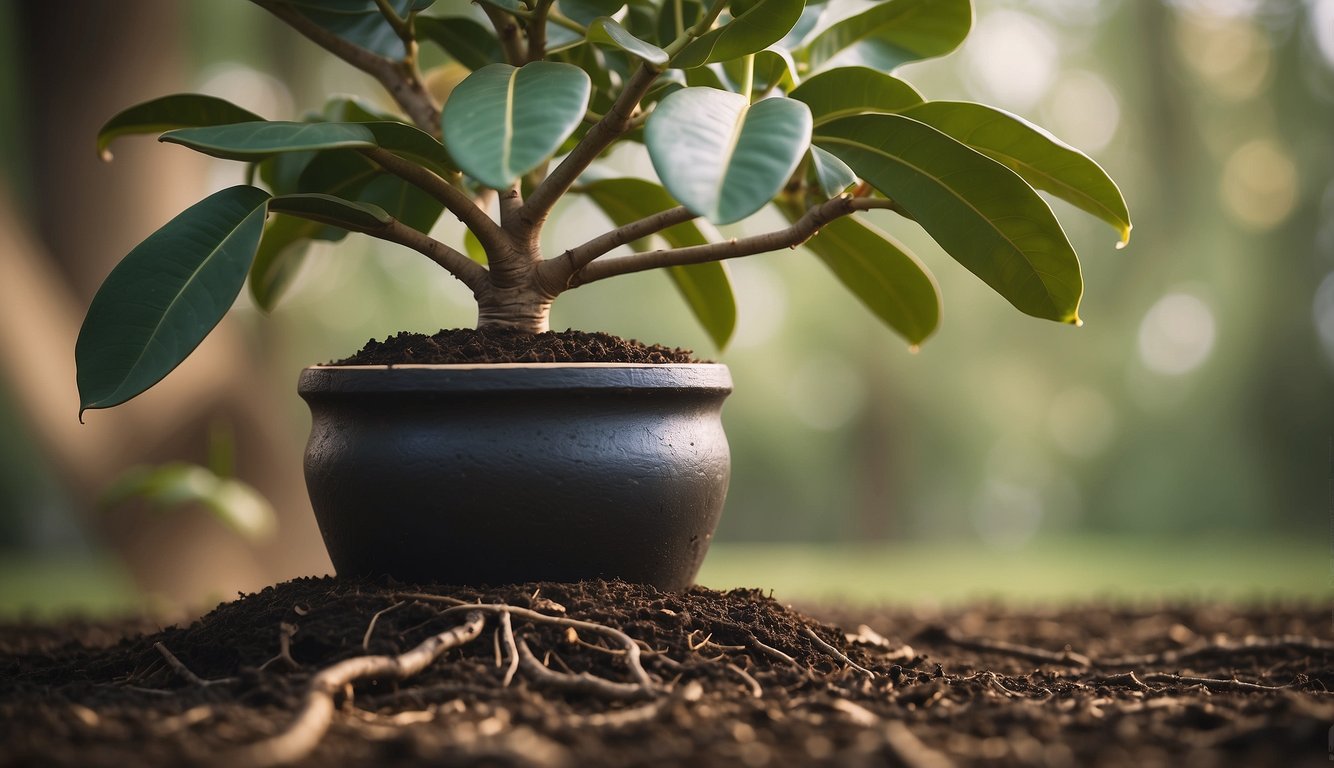
Rubber trees do not like to be root bound. When a rubber tree becomes root bound, it can stunt its growth and lead to other problems such as yellowing leaves and soil that dries out quickly. It is important to repot your rubber tree every year or two using a pot that is one size larger than the current one to prevent it from becoming root bound.
To ensure that your rubber tree is healthy and thriving, you should also make sure to provide it with the right amount of water, light, and nutrients. Rubber trees prefer bright, indirect light and should be watered when the top inch of soil feels dry. Overwatering can lead to root rot, so it is important to let the soil dry out between waterings.
Overall, taking care of a rubber tree is relatively easy as long as you are aware of its needs. By repotting it regularly and providing it with the right conditions, you can enjoy the beauty and benefits of this versatile plant for years to come.
Do Rubber Trees Like to be Root Bound?
Today, we’re diving into the world of Rubber Trees. These leafy beauties have a secret – they kind of like being root bound!
Yes, you heard it right! Rubber Trees, or Ficus elastica, are one of those plants that prefer their roots to be snug in the pot. It’s like a cozy blanket for them! You can check our homepage here.
But remember, there’s a fine line between snug and suffocating. If you see roots growing out of the drainage holes, it’s time for a bigger pot.
So, next time you’re worried about your Rubber Tree being root bound, just remember – they like it that way!
For more plant care tips, do visit the website theherbprof.com. Keep those thumbs green, folks!
References – Do Rubber Trees Like to Be Root Bound?
Little Herb Encyclopedia, by Jack Ritchason; N.D., Woodland Publishing Incorporated, 1995
The Ultimate Healing System, Course Manual, Copyright 1985, Don Lepore
Planetary Herbology, Michael Tierra, C.A., N.D., Lotus Press, 1988
Handbook of Medicinal Herbs, by James A. Duke, Pub. CRP Second Edition 2007
The Complete Medicinal Herbal, by Penelope Ody, Published by Dorling Kindersley
Check the Following Articles!
Easiest Hot Peppers to Grow: A Beginner’s Guide
How to Make Eggs Last Longer: Simple Tips and Tricks
Fruit Bushes That Grow in Shade: Guide to Shade-Tolerant
Frequently Asked Questions – Do Rubber Trees Like to Be Root Bound?
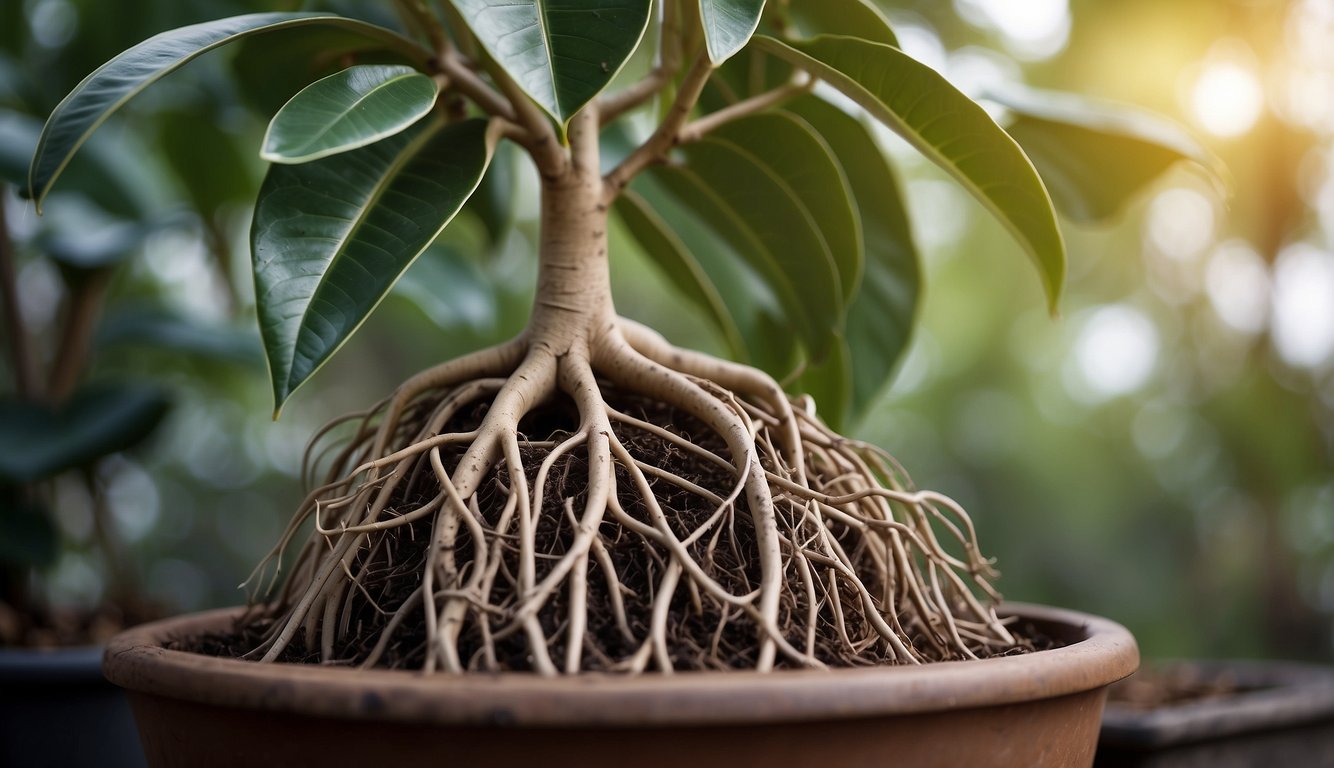
How often should a rubber plant be repotted to prevent root binding?
Rubber plants should be repotted every 1-2 years to prevent root binding. When a rubber plant is root bound, it may have trouble absorbing nutrients and water from the soil. Repotting the plant in a larger container with fresh soil will provide the plant with the necessary nutrients and space to grow.
Can a rubber plant thrive indoors if it becomes root bound?
A rubber plant can survive indoors if it becomes root bound, but it may not thrive. Signs of a root bound plant include slow growth, yellowing leaves, and soil that dries out quickly. To prevent root binding, it is important to repot your rubber plant every 1-2 years.
What are the signs that a rubber plant needs repotting?
Signs that a rubber plant needs repotting include roots growing out of the drainage holes, slow growth, yellowing leaves, and soil that dries out quickly. If you notice any of these signs, it is time to repot your rubber plant.
How does repotting in winter affect a rubber plant?
Repotting a rubber plant in winter can be stressful for the plant because it is dormant. It is best to repot a rubber plant in the spring or summer when it is actively growing. This will minimize the risk of transplant shock and allow the plant to recover more quickly.
What should I do if my rubber plant’s roots are growing above the soil?
If your rubber plant’s roots are growing above the soil, it is a sign that the plant is root bound and needs to be repotted. Gently loosen the roots and transplant the plant into a larger container with fresh soil. Be sure to water the plant thoroughly after transplanting.
How can I minimize transplant shock when repotting my rubber plant?
To minimize transplant shock when repotting your rubber plant, make sure to water the plant thoroughly before and after transplanting. Use a potting mix that is well-draining and provides good aeration for the roots. Avoid fertilizing the plant for a few weeks after repotting to allow the roots to adjust to their new environment.
